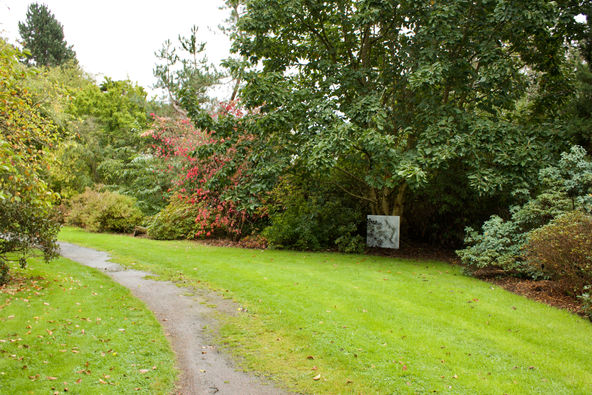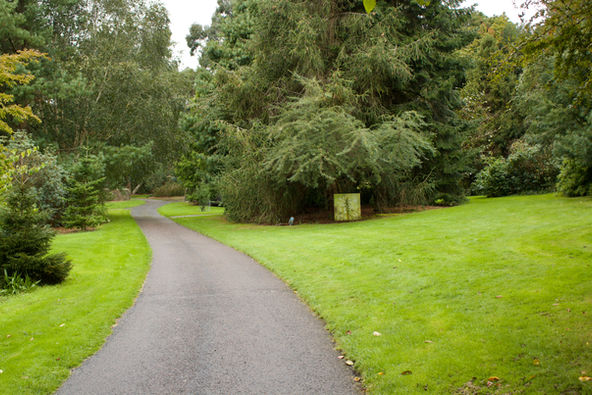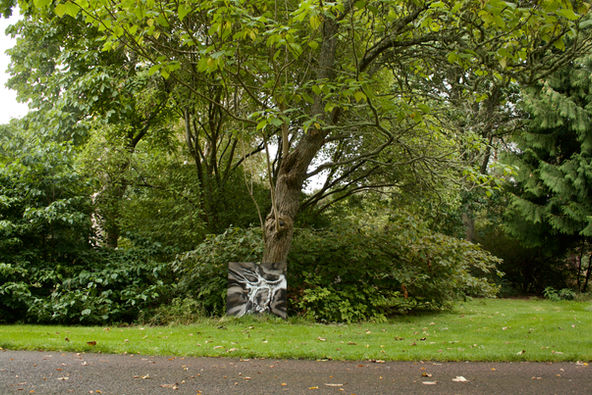
BRYOPHYTES AND LICHENS TRAIL

BRYOPHYTES AND LICHENS TRAIL

Bryophytes and Lichens Trail
Artist in Residence, Dundee Botanic Gardens, Dundee
2023
My project with Dundee Botanic Gardens began at the tail end of 2022, following discussions with Kevin Frediani, the curator of the Dundee Botanic Gardens, around the place of art in science and ecology.
This collaboration of art and science is an ongoing theme within my work. As art allows not just me, the creator, but also the viewer, an emotive access point to experience science. But why not just use a photo? I often get asked this because of the detailed nature of my painting, and my simple answer is, it is not a photo, I do not paint photo realistically, I paint realism. Painting allows for me to take away all the "noise" from an image, so you're left with simplicity, a scientifically accurate, identifying details included (like the teeth on Polytrichum commune leaves), view of what is being depicted. Art is also often seen as more accessible, there is no jargon, or difficult equations or theories, art allows you a quiet moment to observe. People are more likely to spend time with a painting. This time allows them to have an emotional response. "Art is emotive." as Kevin Frediani says. Art provides a stepping stone for people to get interested...
And thus started a period of time researching the bryophytes and lichens within the Dundee Botanics. I was looking for species that met my trail criteria...
The Criteria:
1. Accessible. I wanted all chosen species to be able to be seen from the main pathways, if not the species themselves, then at least the reproductions, so all could see the artwork.
2. Find-able. I really wanted to only pick those in enough abundance that visitors would be able to identify them for themselves.
3. Visually Diverse. To show the amazing diversity of bryophytes and lichens.
4. Have interesting adaptations, stories or uses.
5. Be taken to parts of the gardens you may not otherwise go to.
6. To be fun and educational.
I set about identifying specimens in the gardens, which is a lot harder than I predicted. Some species can only be identified from one another under a microscope! So I enlisted help. My plan was always to be advised by experts, but to my great relief, it became a collaboration. With the help of the British Bryological Society and the British Lichenological Society, we not only found species that fit my criteria for the trail but ended up creating a full list for the Dundee Botanics on the specimens present within the gardens.
Once the final 8 were decided, 4 mosses, 1 liverwort and 3 lichens, I began further research, observation of the species themselves. I spent many days sitting in the garden drawing. Why drawing? Why not just take photos? Well, I did take photos, but the act of drawing itself is akin to a form of research. I ended up writing my Master's thesis for social anthropology on this very topic. Drawing is not a means to an end, but an embodied process. The act of looking, becomes charged, deeper, leading you to see.
Seeing being an active form of looking. You are no longer just observing, but by
sitting, for an extended period with your subject matter, you don't just get a better
idea of what it looks like, but you start to participate. I don't mean I behave like a
lichen or a moss, what I mean is that you start to notice more about what's around,
the small things, where is the water source, what plants are nearby, what insects
seem to be most present, you notice more. Which for anthropology, is the basis of
ethnography, participant observation.
This culminated in the creation of 8 oil paintings of these specimens, which were
reproduced onto large-scale weatherable boards that were then placed in the
botanics along the trail and near their respective specimens.
I was fortunate however to have a breif period between picking up the boards and the install at the botanics, so I took the reproductions back to some of the places that had inspired the project, places that I knew I could find the exact specimen represented. The photos below were taken in Roslin Glen and Red Moss Balerno just outside of Edinburgh, and by Loch Leven in Kinross.
Alongside the trail I also created two handout, one for adults and one for children. Huge amounts of research and discussion went into these, with two rounds of proof reading by experts in bryology and lichenology to fact-check. The hardest part however wasn't the writing but the formatting!! Anyone who has had to make this kind of thing before will probably be groaning in sympathy. They were designed to be double sided A3 with the adult's one being folded in half to create a booklet, and the children's' one being large enough to allow all the interactive elements their space. One of my absolute must-haves on the children's handout was a place to draw each specimen. My hope is that in the time it takes them to observe, and reproduce it on the page, they will be exposed to it and be present with it, so as to better understand it.
You can see the handouts here:
The trail will be on indefinitely at the Dundee Botanic Gardens, and we will be running a series of talks and pop-up art exhibitions within the gardens on the 21st October 2023 to coincide with National Moss Day. So if you are in the area, please do visit, gate fees for the day will be waved, so it'll be an amazing opportunity to explore the gardens and see some art. I'm also thrilled to say that we are planning to alter the trail over the coming years, adding specimens, changing the route, and hopefully taking... "Beyond the Garden Wall". So watch this space, there's hopefully some public art on the horizon.

































